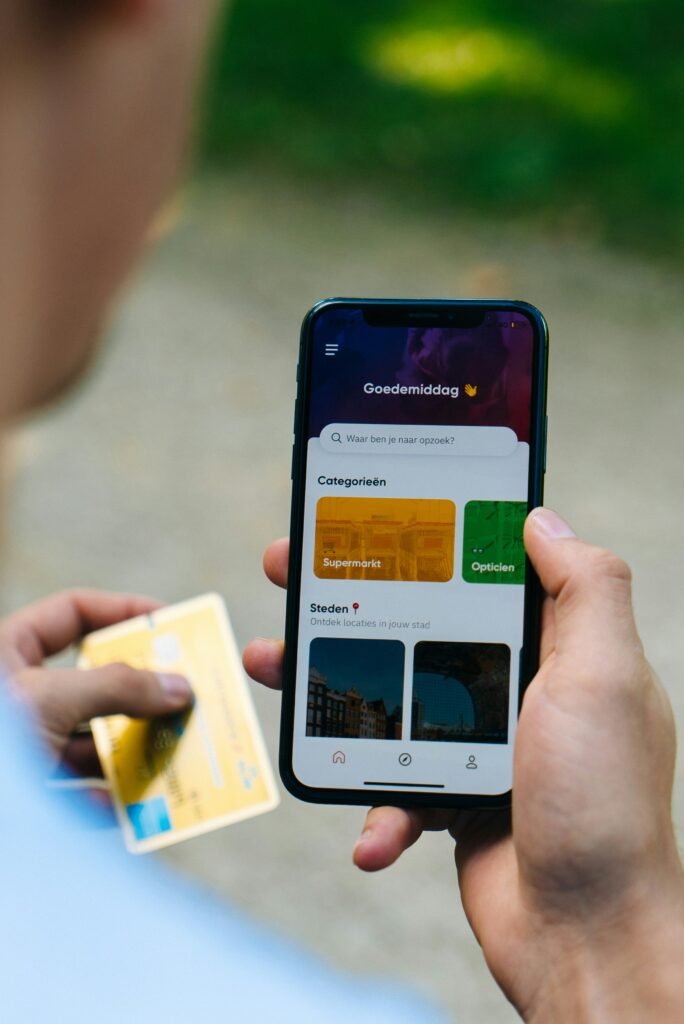Have you ever wondered what the term “canceled call” means when you see it on your iPhone? Don’t worry, you’re not alone. In this article, we will explore the meaning behind this frequently encountered notification on your device. Whether you’ve accidentally disconnected a call or someone hung up on you, understanding the implications of a canceled call will help you better navigate your iPhone experience. Let’s uncover the mystery together!

Understanding Canceled Calls on iPhone
What is a canceled call?
A canceled call on an iPhone refers to a phone call that is intentionally ended by the caller before the recipient has the chance to answer. It is different from a missed call, where the caller intended for the call to connect but the recipient did not answer in time. When a call is canceled, it does not appear in the call log as a completed call, and there is no record of it on the recipient’s device.
Common causes of canceled calls
There can be various reasons why someone might cancel a call on their iPhone. It could be a simple mistake, such as dialing the wrong number or realizing they need to gather more information before making the call. Additionally, a user might cancel a call if they suddenly change their mind about making the call or if they encounter an unexpected interruption or distraction.
Difference between canceled calls and missed calls
Canceled calls and missed calls may seem similar, but there are key differences between the two. A missed call occurs when someone calls your iPhone, but you are unable to answer it or choose not to answer. The call goes through, but you are not available to pick up. On the other hand, a canceled call happens when you initiate an outgoing call but end it before the recipient has a chance to answer. The call does not connect, and there is no notification or record for the recipient.
Canceling Outgoing Calls
How to cancel an outgoing call on iPhone
Canceling an outgoing call on your iPhone is a straightforward process. If you change your mind or realize you dialed the wrong number, simply tap the red “End Call” button while the call is still dialing. This will immediately cancel the call and prevent it from connecting to the recipient.
What happens when you cancel an outgoing call
When you cancel an outgoing call on your iPhone, the call is terminated before it establishes a connection with the recipient. As a result, the recipient’s iPhone will not ring, and they will not receive any notification of your attempted call. Moreover, since the call did not connect, it will not appear in the recipient’s call log or contribute to their call statistics.
Effects of canceling calls on call logs
Canceling an outgoing call has an impact on your call logs. When you cancel a call, it does not appear in your call history or call log. This can be beneficial if you accidentally dialed the wrong number or decided not to proceed with the call and do not want any record of it. However, if you do intend to keep a record of your outgoing calls, it is important to be mindful of canceling them as they will not be logged.

Receiving Canceled Calls
How to check if a call was canceled on iPhone
If you suspect that you may have received a canceled call on your iPhone, there are a few ways to check. Firstly, you can review your call log and look for any calls where the duration is listed as zero seconds or where there is no record of an incoming call at the specific time. Additionally, if you have voicemail enabled, a canceled call may result in an empty or skipped voicemail notification without any accompanying message.
Possible reasons for call cancellations
There are several potential reasons why you might receive a canceled call on your iPhone. The caller may have intentionally canceled the call due to a change of plans, a loss of interest, or a distraction. It could also be the result of technical issues on the caller’s end, such as a poor signal or a problem with their device. Additionally, call cancellations can occur if the caller mistakenly dialed the wrong number and realized their error before the call connected.
Potential impact of receiving canceled calls
While receiving a canceled call may not have immediate consequences, it can be frustrating or confusing, especially if it happens frequently. It may also raise concerns about the reliability of your communication network or the intentions of the caller. However, it is essential to remember that canceled calls are often harmless and can simply be attributed to human error or technical glitches.
Troubleshooting Canceled Calls
Resolving issues with canceled calls
If you frequently experience canceled calls on your iPhone, there are a few troubleshooting steps you can take. Firstly, ensure that your device has a strong and stable network connection. Weak signals or network disruptions can lead to failed or canceled calls. Restarting your iPhone or resetting network settings may also help resolve any temporary issues causing call cancellations.
Ensuring a stable network connection
To improve your chances of successful calls and minimize cancellations, it is crucial to have a stable network connection. Ensure that you are in an area with strong cellular coverage or connected to a reliable Wi-Fi network. Avoid making calls in areas with weak signals or high network congestion to reduce the likelihood of call cancellations.
Updating iOS to fix call-related problems
Regularly updating your iPhone’s operating system (iOS) can help address any known issues related to calls, including canceling calls. Apple frequently releases software updates that contain bug fixes and performance improvements. Keeping your device up to date with the latest iOS version can help prevent or resolve any technical problems that may be causing call cancellations.

Preventing Accidental Call Cancellations
Activating call confirmation feature
To avoid accidental call cancellations, you can activate the call confirmation feature on your iPhone. This feature prompts you to confirm your intention to cancel an outgoing call before terminating it. To enable call confirmation, go to Settings > Phone > Call Confirmation and toggle the switch to the on position.
Using call-blocking apps to avoid accidental cancellations
Another way to prevent accidental call cancellations is by using call-blocking apps that provide additional features and options for managing your calls. These apps often include features such as call blocking, call recording, and call scheduling, which can help minimize the chances of canceling calls unintentionally.
Applying screen lock during calls
Accidental touches or gestures on the iPhone’s screen can inadvertently cancel ongoing calls. To prevent this, you can apply the screen lock during active calls. By locking the screen, you reduce the risk of accidentally pressing the “End Call” button or engaging with other functions that could lead to the cancellation of your call.
Call Cancellation vs. Call Rejection
Understanding the difference between call cancellation and call rejection
Call cancellation and call rejection are two different actions with distinct outcomes. Call cancellation refers to ending an outgoing call before the recipient has a chance to answer. In contrast, call rejection occurs when the recipient declines an incoming call. While call cancellation prevents the call from connecting, call rejection allows the call to attempt a connection but is explicitly declined by the recipient.
How call rejection works on iPhone
When you receive an incoming call on your iPhone and choose to reject it, you can do so by tapping the red “Decline” button or pressing the physical side button or sleep/wake button twice. The caller will hear a busy tone, and the call will be immediately terminated. The rejected call will be logged in your call history with the timestamp and other relevant details.
Managing call rejections
Managing call rejections on your iPhone can be done through various settings and options. You can customize call rejection messages for specific contacts, enable “Do Not Disturb” mode to automatically reject calls during specific times, or use call-blocking apps to filter incoming calls based on certain criteria. It’s important to configure these settings according to your preferences to effectively manage call rejections.
Impact on Cellular Data and Call Charges
Effects of canceled calls on cellular data usage
Canceled calls do not typically have a significant impact on cellular data usage. Since the call is canceled before it connects, no data is transmitted during the call session. However, it is worth mentioning that if you frequently cancel calls and redial immediately, it may lead to incremental data usage due to the connection establishment process.
Possible billing implications of canceled calls
Canceled calls should not result in direct billing implications, as they do not connect and are not considered completed calls. Depending on your cellular plan and service provider, you may be charged for the initial attempt to make the call, but this is usually included as part of your regular calling package.
Preventing unnecessary data usage
To prevent unnecessary data usage when canceling calls, it is advisable to monitor your call habits and avoid repeatedly canceling and redialing in quick succession. This can help minimize any potential data consumption related to the initiation process of the call. Additionally, connecting to a Wi-Fi network whenever possible can further reduce cellular data usage on your iPhone.
Canceled Calls in Third-Party Apps
Exploring canceled calls in messaging apps
Canceled calls can also occur within messaging apps that offer calling functionalities, such as WhatsApp, Skype, or FaceTime. Similar to canceled calls on an iPhone, these apps allow users to end a call before it connects to the recipient. The recipient will not receive any notifications, and the call will not be logged.
Potential issues with canceled calls in VoIP services
In some cases, canceled calls in Voice over Internet Protocol (VoIP) services may be more problematic than traditional calls. Technical issues, network instability, or poor internet connectivity can result in frequent call cancellations, causing frustration and hindering effective communication. It is essential to ensure you have a reliable internet connection when using VoIP services to minimize call cancellations.
Tips for troubleshooting canceled calls in third-party apps
If you encounter issues with canceled calls in third-party apps, there are a few steps you can take to troubleshoot. First, check your internet connection and ensure it is stable. If the problem persists, try re-installing the app or updating it to the latest version, as software bugs or outdated versions can sometimes cause call cancellations. If the issue continues, reaching out to the app’s support team or checking online forums for similar cases might provide further assistance.
Privacy and Security Considerations
Protecting sensitive information during canceled calls
While canceled calls may not directly pose a privacy risk, it is essential to remain cautious during all phone interactions. During a call, avoid sharing sensitive or confidential information unless you have verified the identity of the other party. Treat canceled calls as any other communication and remember to exercise discretion to protect your personal data.
Risks of voice phishing and call spoofing
Voice phishing (Vishing) and call spoofing are techniques used by scammers to deceive individuals over the phone. Although these attacks are not directly related to canceled calls, it is important to be aware of them to protect yourself. Be cautious of unsolicited calls, never provide personal or financial information over the phone unless you are certain of the caller’s identity, and report any suspicious calls or activities to the appropriate authorities.
Safe practices for handling canceled calls
To maintain your privacy and security when dealing with canceled calls, following some best practices can be beneficial. Avoid returning canceled calls unless you are certain of the caller’s identity. If the canceled call appears to be a genuine mistake, it is generally best to wait for the caller to initiate contact again. Be cautious of unexpected or suspicious calls, even if they seem genuine, and trust your instincts when deciding how to respond.
When to Seek Technical Support
Indications of underlying technical problems
If you consistently encounter canceled calls or face other call-related issues on your iPhone despite troubleshooting efforts, it may indicate underlying technical problems. These problems could be related to your device’s hardware, software, or network connectivity. Continuous canceled calls, call drops, or other abnormalities should be taken as potential signs to seek technical support.
Contacting Apple Support for assistance
If you require further assistance in resolving canceled call issues on your iPhone, it is advisable to contact Apple Support. Apple’s support team can provide specific guidance based on your device model, iOS version, and other relevant details. They will be able to diagnose any potential hardware or software issues and offer personalized solutions to address your concerns.
Providing relevant details for effective troubleshooting
When reaching out to technical support, providing specific details can help facilitate a more efficient troubleshooting process. Make sure to provide information such as the frequency of canceled calls, any error messages or symptoms experienced, the iOS version installed on your device, and any recent changes or updates made to your iPhone. The more details you provide, the better equipped the support team will be to assist you effectively.
By understanding canceled calls on iPhone, knowing how to handle them, and taking necessary precautions, you can optimize your calling experience and ensure effective communication without unnecessary interruptions or confusion.








